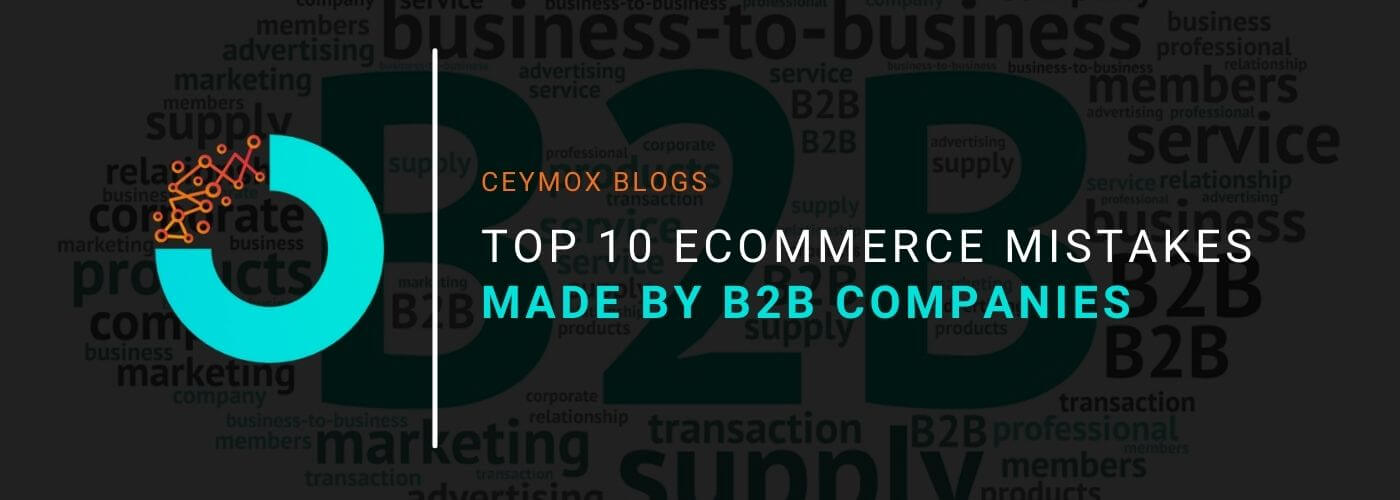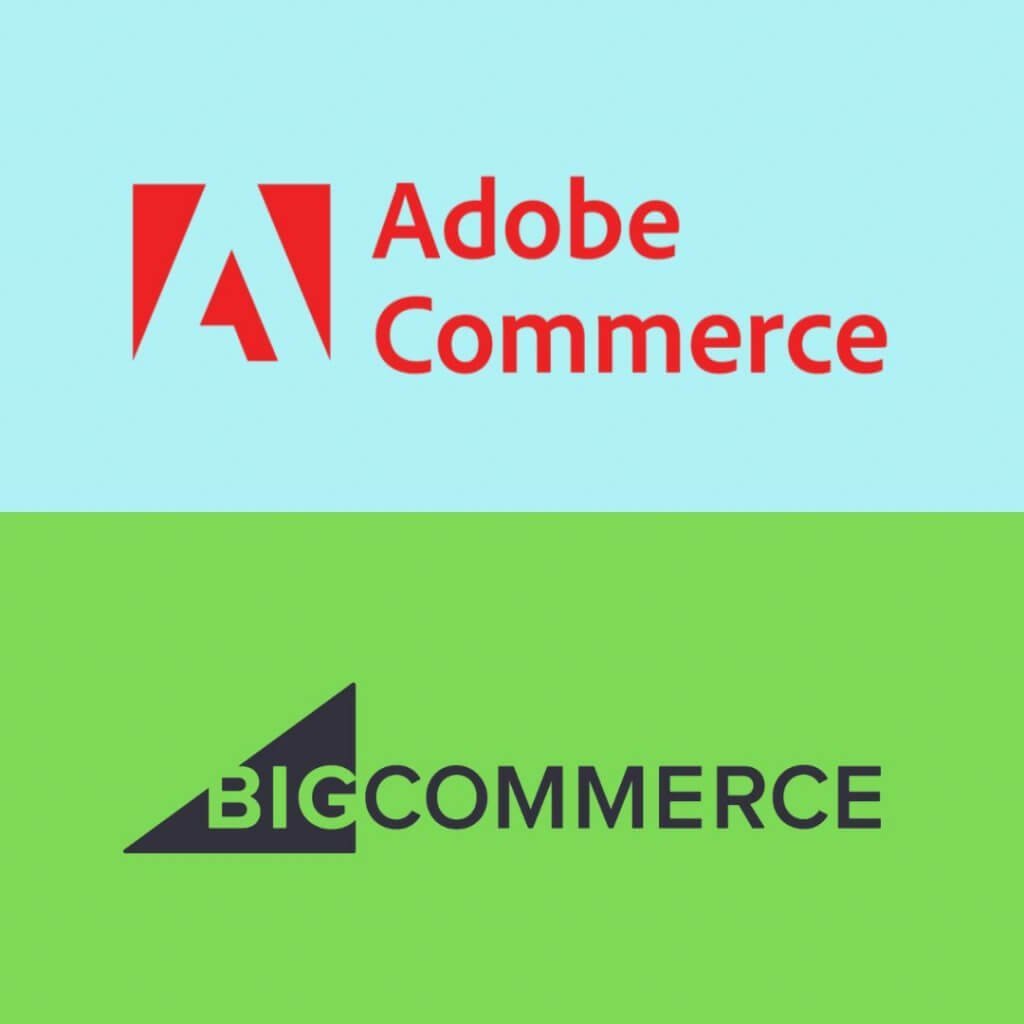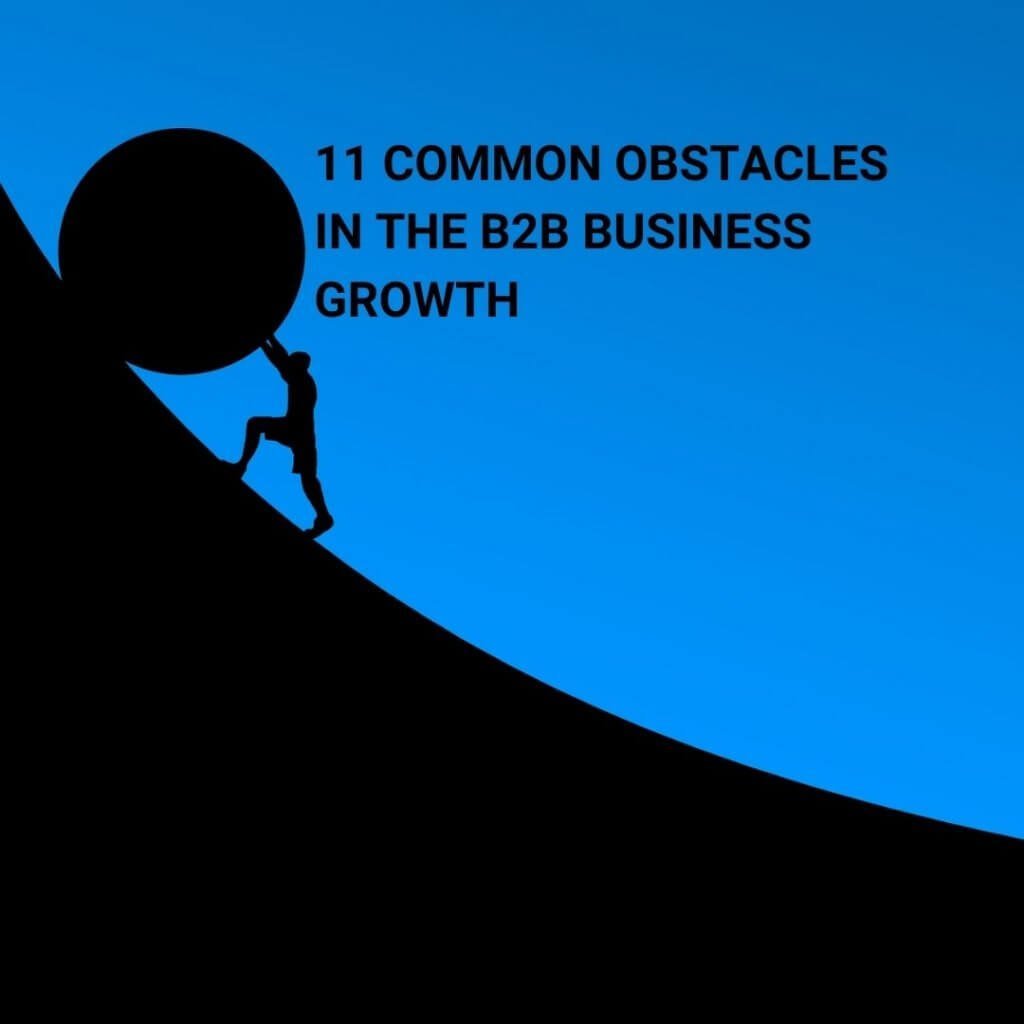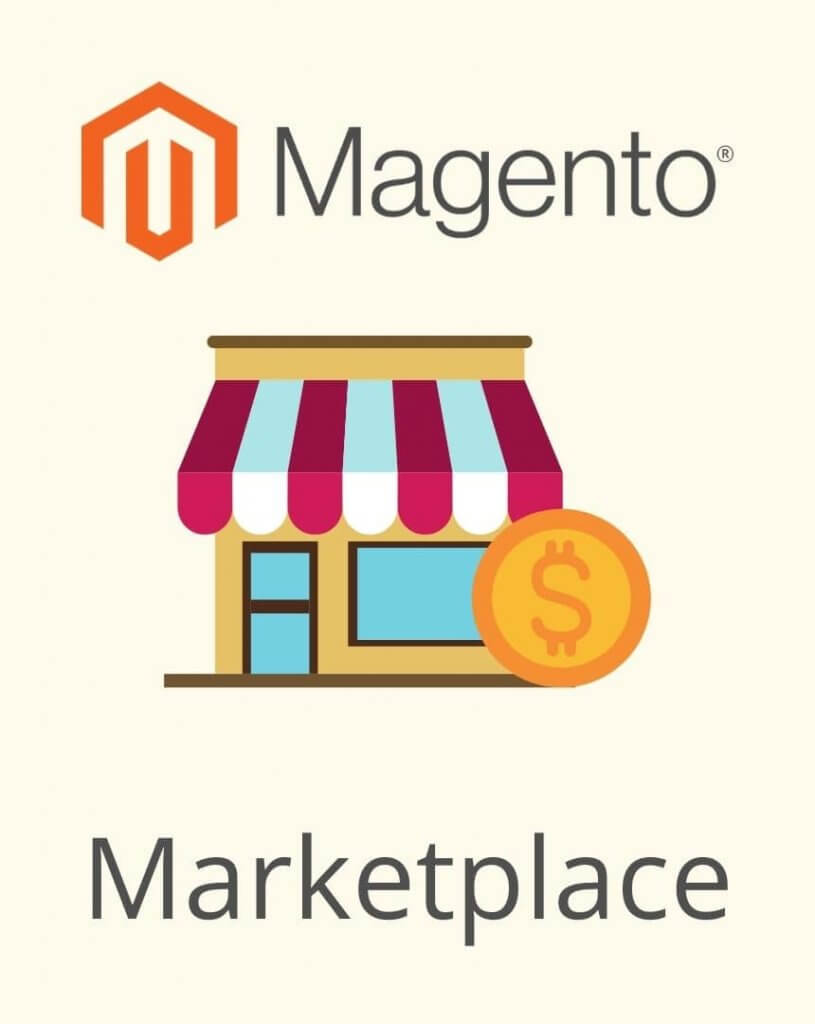
PLUS 10 EXAMPLES OF HOW SUCCESSFUL ONLINE COMPANIES RESTORED FROM THESE FAILURES
As they observed rivals gaining market share by providing today’s B2B consumers with what they wanted—an easy method to shop and buy online—many B2B enterprises hopped on the eCommerce bandwagon in recent years.
The expectations and purchasing habits of B2B clients are evolving.
Sixty-four percent of workers study at least half of their purchases online. Over 75 percent believe it is more convenient to make purchases from websites than salespeople, and 93 percent prefer to make purchases online when they have already decided what to buy.
You must make sure you continuously provide an online experience for B2B buyers that:
- Fulfills client expectations.
- Promotes sales
- It strengthens brand loyalty.
To accomplish so, you must avoid the 10 B2B eCommerce blunders listed below, which might hinder your company from becoming the next B2B success story.
How do B2B customers research and make purchases?
- 64% of customers research at least half of their purchases online
- 75% of respondents said shopping online is more convenient than speaking with a salesperson.
- 93% of people prefer to make purchases online.
1. B2B buyers are unwilling to make online purchases.
While some B2B consumers still prefer in-person meetings with salespeople, most B2B clients now prefer to make purchases online. All B2B purchasers, but mainly millennials who have never lived in a world without the internet, should be aware of this. Millennials want to be able to buy things from businesses online just as they do in their personal lives, now that they are entering managerial positions with money supply and undertaking 50% of all B2B research.
The ease of online shopping is preferred by 72% of B2B clients. They enjoy having 24/7 access to information, self-service access to the account and orders, and control over the purchasing process.
While more complicated transactions may still need some communication with trained salespeople, most B2B customers prefer to utilize e-commerce for research, purchases, reorders, and even help. B2B eCommerce is becoming crucial for boosting sales, income, and client loyalty as more and more clients continue to move their purchasing patterns online.
How Texas America Safety Company overcame the error of assuming business-to-business buyers don't want to make internet purchases.
More than 20 years ago, Texas America Safety Company began distributing workplace safety equipment via the West Texas oil industry. They used delivery vans to visit as many consumers as possible and sold goods there for many years. They started their first website in 1996 and learned about the advantages of internet commerce.
“Putting our items online and aggressively promoting our website allowed us to boost our sales significantly.” Thanks to the internet, our firm is now flourishing.
2. Not offering a comparable B2C shopping experience.
Customers have effectively been taught by Amazon as well as other B2C merchants to expect quick, simple, and pleasant online buying experiences from beginning to end. The same customer orders from the B2B company’s eCommerce site throughout the daytime and anticipates a similar experience as when they shop on Amazon, mainly in the evening and on the weekends. Businesses need to serve B2B customers the same way they treat B2C customers, from individualized product suggestions & special offers to a simple purchase procedure and quick delivery.
B2C customers are accustomed to making purchases on eCommerce sites that are attractively constructed and simple to use, and they now anticipate the same level of service from the websites of their B2B suppliers.
Do you use these typical B2C features while making B2B purchases?
- High-quality product pictures
- Thorough product descriptions
- Sophisticated search capabilities
- Options for payment
- Personalized Promotions
- Live chat
3. Ignoring the significance of mobile business-to-business e-commerce
When companies disregard the mobile channel, they commit a grave error. Sixty 1 percent of B2B customers use cell phones to research professional purchases, and sixty percent claim that mobile affects conversions significantly. B2B purchasers utilize mobile devices throughout the purchase process, even after the sale, for customer care, complete transactions, and seek price estimates.
Leading B2B companies develop mobile applications that offer a quicker and more convenient method to engage clients and create a mobile-optimized eCommerce website. Mobile applications may help everyone engaged in the B2B eCommerce experience, from consumers & distribution partners to field sales representatives and internal employees, in addition to being a tremendous differentiator.
How Atlanta Light Bulbs was able to avoid the error of underestimating the significance of mobile business-to-business eCommerce
In 1999, Atlanta light bulbs started selling online. Early eCommerce adoption offered the brand a competitive advantage for over 20 years. Still, in recent years, rival brands have started gaining market share by establishing their respective online presence in recent years. In response, the business upgraded its marketing capabilities and added a mobile app to its digital products.
“Our mobile app is well-liked by our users! We can also provide it to our business clients, set them up, and load their preferred things onto their phones before saying, “Here, bam! All you need to do is place a purchase on your phone to be set to go.
4. Neglecting SEO
Ignoring SEO is one of the worst mistakes a business can make, especially given that 89 percent of B2B customers use the internet for B2B research and that 73 percent of traffic to B2B firm websites comes from search engines. Being found in non-branded searches for phrases that B2B buyers have at the start of their customer journey is vitally essential.
Optimize SEO best practices to improve on-page content (especially product pages) and metadata after developing a keyword plan based on knowledge about consumers’ Google search phrases. In a way to lure and convert more For consumers, the correct SEO approach may increase your website’s organic search exposure, authority, and on-site interaction.
How Avery Dennison managed to escape the error of ignoring SEO
Avery Dennison offers eco-friendly packaging, labeling, printing, and attaching options for enterprises. Before establishing its e-commerce website, the company’s direct marketing approach consisted of mailing paper copies of its extensive product catalog to consumers. Avery Dennison attracts and converts more clients online with a properly optimized website layout and content that appeals to both users and search engines. At the same time, they continue to send out the catalog.
Customers are now finding us on Google. We’ve noticed a noticeable rise in income merely from organic visitors. Without this website, we may not have been able to earn that kind of money.
5. Thinking you can’t offer custom orders.
Many businesses think they won’t be able to offer this degree of customization through their eCommerce site, despite the fact that B2B clients are accustomed to negotiating specific price arrangements with firms. By categorizing consumers into different categories on an e-commerce platform, you may display their special prices and discounts to them. By creating customer groups, you may tailor purchases with clients based on their particular demands and price conditions.
Additionally, you can allow special orders by using quotation tools. Customers may quickly and simply request a pricing quotation 24 hours a day, seven days a week, using an app such as Quote Ninja. It can evaluate and react to during regular office hours just to let them know whether the program is running or not.
If possible, the client is in their particular customer group, so they won’t need to use the quotation engine again.
When they place their order, in the future, clients may check out with only one click at the agreed-upon price.
How did Spectrum Audio not make the error of assuming that bespoke ordering couldn't be done?
Spectrum Audio supplies high-quality audio and video equipment to individuals and other companies. They recognized that companies desired the option to get quotes online because they were both B2B buyers and vendors. They were aware that introducing this straightforward but proper function to their online store would increase client engagement and increase sales.
“After switching to BigCommerce, we developed a similar app in three days using their API that allowed consumers to get a quotation, receive it through email, and check out at a price. ” If we removed this accessible item, I’d anticipate a 40% loss in income. It had a significant influence on our website.
6. Not providing payment options.
B2B businesses use several payment methods. One business could often use mobile wallet payments, while another would only accept paper checks with net 60 conditions as a form of payment. Consider that B2B companies that provide flexible payment alternatives can see sales grow by 17% & average orders enhance by 21%. You don’t want to lose a prospective customer if you can’t accept various offline and online payment methods.
By allowing clients to pay using corporate accounts, credits, e-wallets- wallets, net 30 terms, checks, and other preferred methods, you may reduce the friction associated with buying from your company. To make recurring payments more effortless, you want to make placing new orders a one-click procedure.
Many companies overlook how important the payment method is to the consumer experience. A mistake during this essential stage might prevent a transaction with a client who could become a significant source of income for your company.
How did Discount Gadgets avoid making the error of not accepting credit cards?
For over 20 years, Discount Electronics has developed into a giant online retailer of both new and secondhand computer hardware. They’ve learned how to change with the demands of their clients, from offering pagers and fax machines back in the day to providing cellphones and specialized computers now. A digital wallet payment option was one of those demands, so the business implemented Amazon Pay as an additional payment method.
When we added Amazon Pay and a quicker checkout procedure to our BigCommerce shop, we almost immediately noticed a massive increase in conversions of more than 10%.
7. Not giving all the necessary product details.
The ability to quickly locate what they’re searching for is cited by 76% of customers as the most crucial aspect of a website’s design. B2B purchasers want high-resolution photos of the product and very extensive product descriptions that contain things like exact measurements, materials used, model or part numbers, compatibility with other equipment or goods, data and diagrams, installation information, and even current inventory when they locate the product they’re looking for.
Simply said, prosperous B2B eCommerce businesses present their items in ways that make it simpler for clients to judge what to buy. Provide individualized product suggestions for cross-selling and upselling possibilities, and optimize product descriptions for search engines.
How did Harbor City Supply avoid making the error of omitting vital product details?
Since the late 1990s, Harbor City Supply has offered a wide range of hardware items to retail and business clients. Since then, the company has also conducted online sales. Making product pages easier to use was one of their objectives when they updated their e-commerce website a few years ago. The firm made it simple for clients to buy the precise alternatives they wanted by including thorough descriptions, illustrations, and other helpful materials because many of their goods are complicated.
To assist the consumer in making the best decision, we are quick to respond and provide a lot of information. Our in-depth “How To” articles are highlighted in several categories and product pages to address our clients’ numerous queries before making a decision.
8. Think of social proof as a B2C strategy only.
B2B buyers and B2C customers are comparable in many aspects.
They want assurance that they are purchasing a top-notch item at a reasonable cost from a respectable business that has won the trust of other happy customers. You can’t ignore this channel if you want to expand your business since Millennials highly value peer advice on social media, where they engage with individuals personally and professionally.
A social media presence may develop connections with potential clients and consumers and position your company as a market leader. Share reviews, testimonies, case studies, and other material to draw in, engage, and convert consumers. Offer advice on how to utilize your product.
How Flexfire LEDs overcome the misconception that social proof is solely a B2C strategy?
Their linear LED strip lighting solutions make Flexfire LEDs renowned for producing distinctive interior and exterior lighting effects. Utilizing user-generated material, such as online product evaluations, pictures, and videos from customers, helped the business raise its sales by 832 percent.
“To establish confidence in our business and products, we greatly depended (and still significantly rely on!) on internet evaluations and images provided by customers. As soon as people heard about our goods and services, we began to receive referral sales.
9. Believe that pricing transparency is necessary for B2B e-commerce.
Industry experts disagree on whether B2B companies should disclose all of their price information. While opponents point to the industry’s fierce rivalry and claim that making prices open to the general public allows competitors to underbid them, Proponents contend that price transparency creates confidence and minimizes friction in the selling process.
Luckily, you can have your cake and eat it too. Only once a consumer logs into their account can you separate them into groups to show them customized pricing. You may offer clients discounted prices for categories, certain goods, or your entire business by creating customer groups.
Prospects can still view products on your site, but they will need to contact you for a price because they won’t be signed in.
How Atlanta Light Bulbs was able to sidestep the misconception that B2B eCommerce demands pricing transparency.
Since 1981, Atlanta Light Bulbs has provided commercial and industrial clients with light bulbs, fixtures, and other lighting equipment. Since its 1999 introduction, its e-commerce website has changed significantly, adding client groups that allow the business to show varied pricing to particular consumers.
We provide discounts to various groups based on how much they anticipate spending with us using BigCommerce’s out-of-the-box customer groups. Customers will open a “Business Account” and inform us of their anticipated annual spending.
We divide them into different client groups with discounts in proportion to the quoted price based on their response.
10. Not integrating your site with other critical systems.
Integrating eCommerce platforms is cited as a high technological need by 57% of B2B executives. Your firm will become far less effective if you neglect to link your eCommerce platform with essential existing systems like your ERP, CRM, and PIM. You will have to manually sync information like inventory, customers, orders, and prices if you choose an eCommerce platform that does not interact with these other crucial services.
With this strategy, you can be certain that you’ll lose time, money, and resources by manually carrying out procedures rather than using that time to market to and serve your consumers.
Your best option is to pick an ideal e-commerce platform for your company that seamlessly connects with current systems to increase productivity and earnings.
How Freund Container & Supply avoided the error of ignoring other crucial systems' integration
For 80 years, Freund Container & Supply has provided businesses with containers, packaging, and industrial supplies. They were aware that it was crucial to integrate. Their eCommerce platform with their back-end systems before launching their new website. By integrating their ERP, Freund is better able to use data from many platforms to optimize and enhance everything from customer service to inventory management.
When a consumer phones our customer support line and mentions their PO number, we can quickly retrieve the record since we can feed cart data to our ERP.
We are able to assist clients in seeing things like their credit limits, balances, and past due balances thanks to our ability to push items from our ERP into our BigCommerce shop.
Having such data gives our consumers more power.
Final Thoughts
Avoid making these frequent e-commerce errors to avoid ruining your B2B venture. Make sure the eCommerce platform you choose has all the features and functionalities that B2B businesses like yours require to succeed. The ideal B2B eCommerce solution should offer everything you need to raise conversions, boost income, and strengthen client loyalty, from permitting bespoke ordering and various payment choices to SEO and integrations.
Discover how the leading SaaS B2B eCommerce platform for corporate brands may help you provide customers with a fantastic shopping experience while maximizing your return on investment.
 Hubspot SEO Certified |  Hubspot SEO II Certified |  Google Ads Search Certified |  Google Analytics Certified |
Sreehari N Kartha is a skilled Digital Marketing Analyst at Ceymox, certified in SEO. His expertise encompasses a wide range of digital marketing strategies, including managing advertising campaigns on platforms like Google Ads, Facebook Ads, Instagram Ads, WhatsApp Ads, and LinkedIn Ads. With a strong foundation in SEO and SMM, Sreehari is adept at optimizing online visibility, driving engagement, and generating qualified leads and conversions. His passion for emerging technologies, such as Crypto, NFTs, and Web3, further complements his skillset, enabling him to navigate the dynamic digital landscape.
View All Articles



